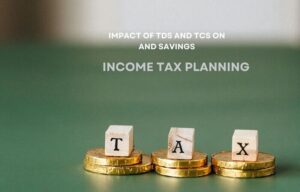Post Office FD – Know Latest Rates & Returns 2023

Apart from being an institutionalized investment option, Post Office FDs have some amazing benefits and provide great returns. This article covers these returns by explaining rates as well as the benefits associated with these POFDs in general.
The interest rates are as follows:
| Period | Interest Rate for Q1 of FY 2022-23* |
| 1 year | 6.60% p.a. |
| 2 years | 6.80% p.a. |
| 3 years | 6.90% p.a. |
| 5 years | 7.00% p.a. |
Following are some current affairs and their impact on POFD returns in general:
Latest Update
RBI has announced a new rule applicable to unclaimed, matured FD accounts. It is that the funds in an unclaimed matured FD account will attract an interest rate as applicable to the savings account or the contracted rate of the matured FD, whichever is lower.
Union Budget 2021 Effects
In the 2021 budget, it was proposed to exempt senior citizens from filing income tax returns if pension income and interest income are their only annual income sources. Section 194P has been newly inserted to enforce that a bank deducts tax on senior citizens of more than 75 years of age who have a pension and interest income from the bank.
Why You Should Apply for POFD?
The utilization of post office fixed deposits has been more in rural areas as compared to banks’ fixed deposit schemes. You have the option to choose any tenure from 1-5 years for a POFD. Do note that the interest rate increases with the number of years you choose to apply for.
At times, post office fixed deposit interest rates can be higher than the rates offered on bank fixed deposits. It is likely, your Post Office Fixed Deposit interest rate will stand somewhere between a bank FD rate and a company FD rate.
POFD is most suited to those individuals who are highly conservative with regard to the safety and risk of their investments. At times, post office fixed deposit interest rates can be higher than the rates offered on bank fixed deposits. It is likely, your Post Office Fixed Deposit interest rate will stand somewhere between a bank FD rate and a company FD rate.
Benefits of POFDs
Flexibility
The minimum amount to open a POFD account is Rs.1000 and there is no maximum limit. You can convert your POFD account from a single to a joint account and vice versa
There is no limit to the number of FD accounts you can open at the post office. You can even open a POFD account in the name of a minor and it will be operated by the parent or legal guardian. You also have the benefit of transferring an FD account from one post office to another.
Nomination
You can even nominate a person while opening a POFD account. Furthermore, the person you nominate can also nominate a person even with an existing POFD account.
Interest
Additionally, the individual also earns interest with the return during the maturity period. The interest rate on POFD accounts is quite attractive, sometimes earning a higher interest rate than a bank FD.
On maturity
Once the account matures, you can withdraw or renew the account for the same tenure.
Premature Withdrawal
You may withdraw the deposit amount even before maturity subject to certain terms and conditions laid by the post office.
Tax Implications
You can claim income tax deduction under Section 80C of the Income Tax Act of India, 1961, on the deposit you have made in the 5-year fixed deposit account.
TDS
If the interest you earn on the FD account exceeds Rs.40,000 per financial year for regular customers, the tax may be deducted at the source by the Post Office.
Hence, this is the latest information on Post Office Fixed Deposits and the returns associated with it as an investment option. In fact, the benefits of being a depositor of a POFD are also explained in detail.

Pranab Bhandari is an Editor of the Financial Blog “Financebuzz”. Apart from writing informative financial articles for his blog, he is a regular contributor to many national and international publications namely Tweak Your Biz, Growth Rocks ETC.






